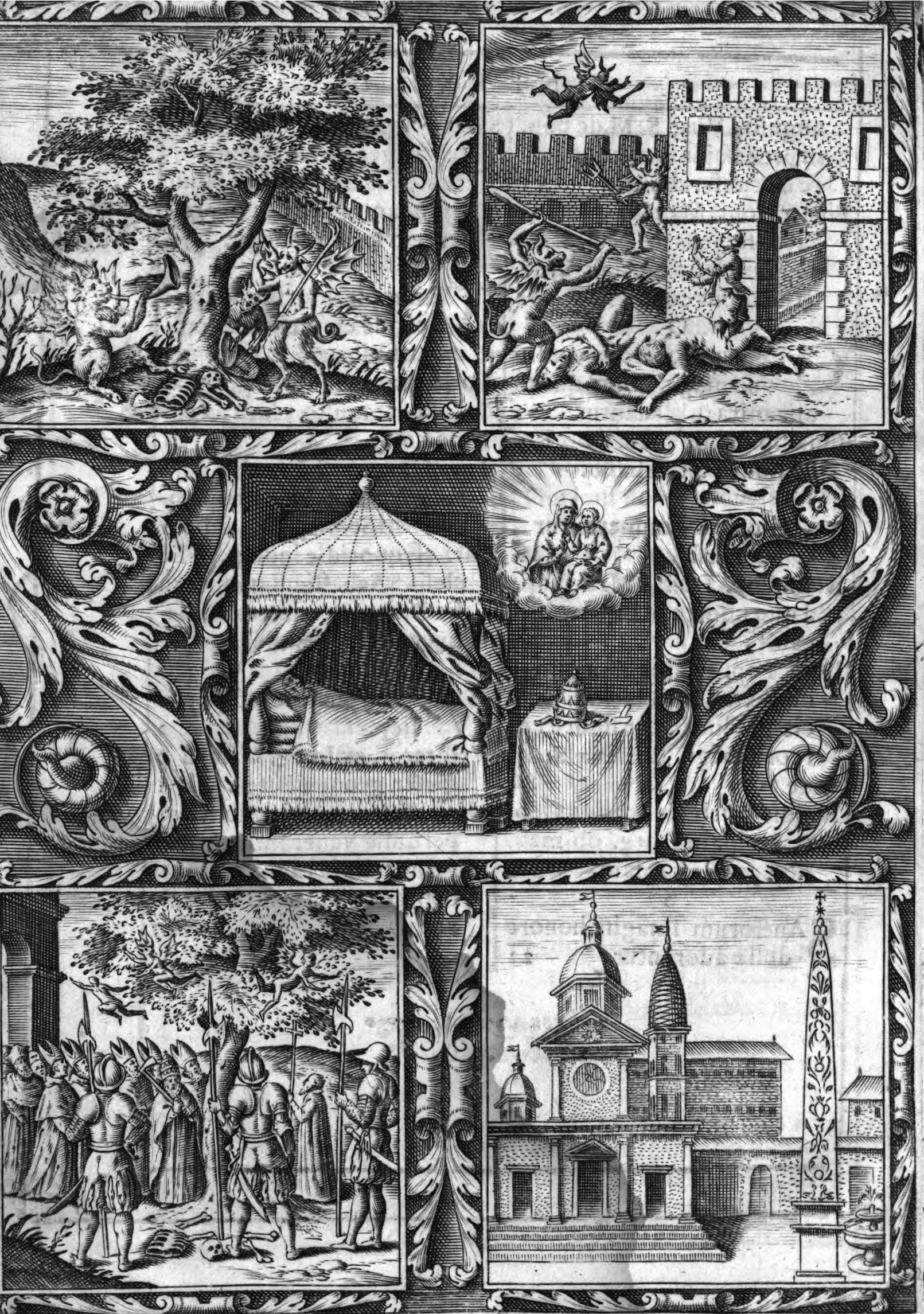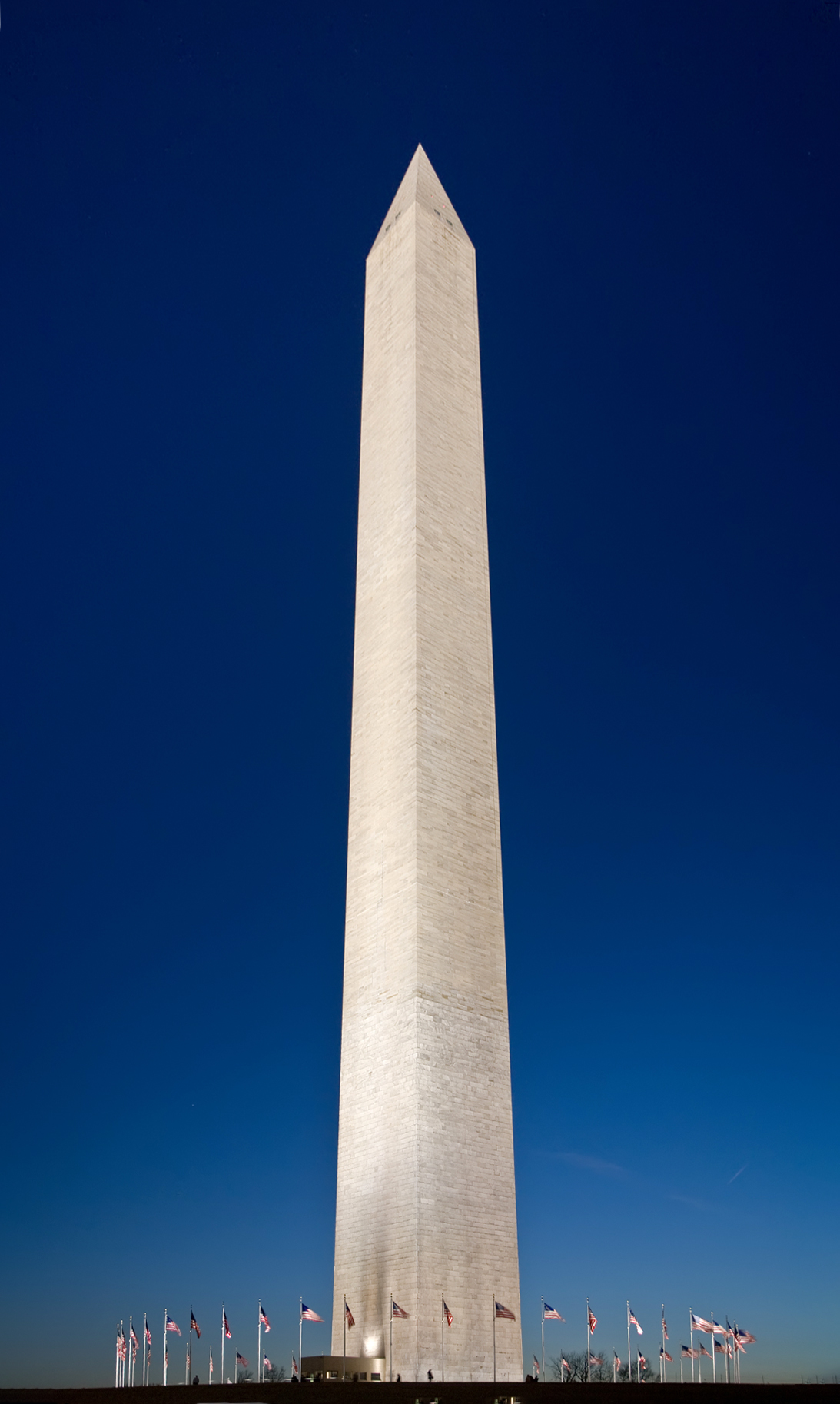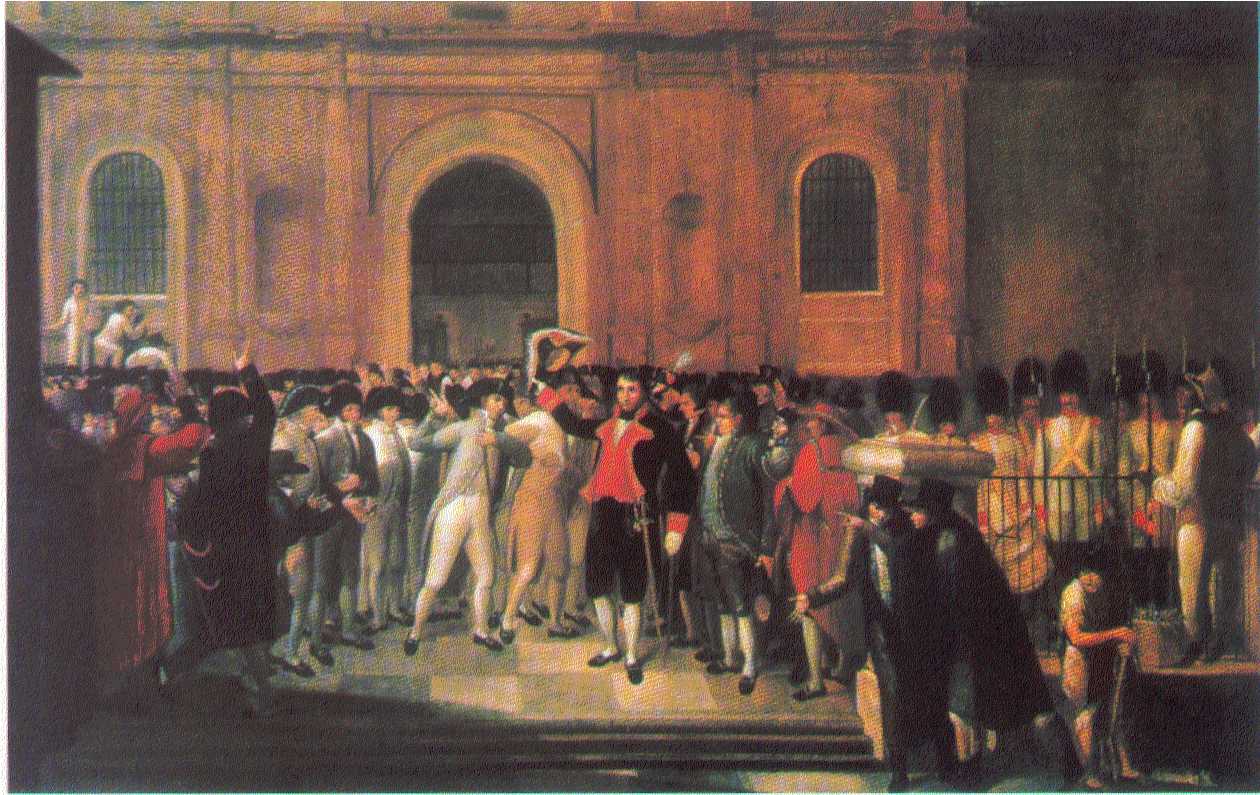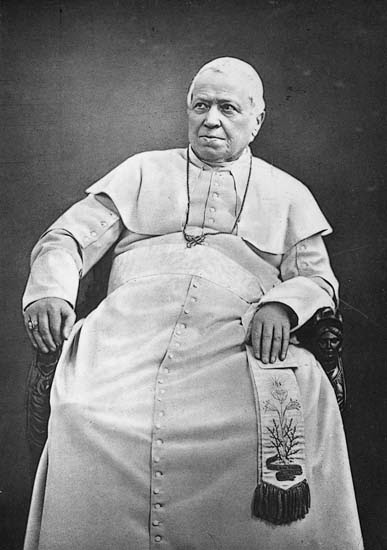|
Flavio Chigi (1810–1885)
Flavio Chigi (Rome, 31 May 1810 – Rome, 15 February 1885) was an Italian Catholic Cardinal, Archbishop and Nuncio. Biography Son of Agostino Chigi and Amalia Carlotta Barberini Colonna di Sciarra, Flavio Chigi belonged to the noble Roman Chigi family originating from Siena, which included among its illustrious ancestors: Pope Alexander VII, and several cardinals such as two of his namesakes Flavio Chigi (1631–1693), Flavio Chigi (1711–1771) and Sigismondo Chigi. He studied with private tutors and later studied theology with the Jesuits in Tivoli. Initially initiated into a military career, he was enrolled in the Papal Noble Guard until 1848 and then ordained a priest on 17 December 1853 and became a canon of St. Peter's Basilica in the Vatican, acquiring the title of Secret chamberlain of His Holiness. On 19 June 1856 he was appointed Titular archbishop of Myra. He received episcopal consecration on 6 July of the same year from Pope Pius IX in the Pauline Chapel of the Qui ... [...More Info...] [...Related Items...] OR: [Wikipedia] [Google] [Baidu] |
Santa Maria Del Popolo
The Parish Basilica of Santa Maria del Popolo () is a titular church and a minor basilica in Rome run by the Augustinian order. It stands on the north side of Piazza del Popolo, one of the most famous squares in the city. The church is hemmed in between the Pincian Hill and Porta del Popolo, one of the gates in the Aurelian Wall as well as the starting point of Via Flaminia, the most important route from the north. Its location made the basilica the first church for the majority of travellers entering the city. The church contains works by several famous artists, such as Raphael, Gian Lorenzo Bernini, Caravaggio, Alessandro Algardi, Pinturicchio, Andrea Bregno, Guillaume de Marcillat and Donato Bramante. History Legendary founding The well-known foundation legend of Santa Maria del Popolo revolves around the evil memory of Emperor Nero and the cleansing of the area from this malicious legacy by Pope Paschal II. As the story goes, after his suicide Nero was buried in the mau ... [...More Info...] [...Related Items...] OR: [Wikipedia] [Google] [Baidu] |
19th-century Italian Roman Catholic Archbishops
The 19th century began on 1 January 1801 (represented by the Roman numerals MDCCCI), and ended on 31 December 1900 (MCM). It was the 9th century of the 2nd millennium. It was characterized by vast social upheaval. Slavery was Abolitionism, abolished in much of Europe and the Americas. The First Industrial Revolution, though it began in the late 18th century, expanded beyond its British homeland for the first time during the 19th century, particularly remaking the economies and societies of the Low Countries, France, the Rhineland, Northern Italy, and the Northeastern United States. A few decades later, the Second Industrial Revolution led to ever more massive urbanization and much higher levels of productivity, profit, and prosperity, a pattern that continued into the 20th century. The Catholic Church, in response to the growing influence and power of modernism, secularism and materialism, formed the First Vatican Council in the late 19th century to deal with such problems an ... [...More Info...] [...Related Items...] OR: [Wikipedia] [Google] [Baidu] |
Cardinals Created By Pope Pius IX
Cardinal or The Cardinal most commonly refers to * Cardinalidae, a family of North and South American birds **'' Cardinalis'', genus of three species in the family Cardinalidae ***Northern cardinal, ''Cardinalis cardinalis'', the common cardinal of eastern North America *** Pyrrhuloxia or desert cardinal, ''Cardinalis sinuatus'', found in southwest North America *** Vermilion cardinal, ''Cardinalis phoeniceus'', found in Colombia and Venezuela * Cardinal (Catholic Church), a senior official of the Catholic Church **Member of the College of Cardinals * Cardinal Health, a health care services company * Cardinal number ** Large cardinal * Cardinal direction, one of the four primary directions: north, south, east, and west * Arizona Cardinals, an American professional football team * St. Louis Cardinals, an American professional baseball team Cardinal or The Cardinal may also refer to: Animals Birds In addition to the aforementioned cardinalids: * '' Paroaria'', a South Americ ... [...More Info...] [...Related Items...] OR: [Wikipedia] [Google] [Baidu] |
19th-century Italian Cardinals
The 19th century began on 1 January 1801 (represented by the Roman numerals MDCCCI), and ended on 31 December 1900 (MCM). It was the 9th century of the 2nd millennium. It was characterized by vast social upheaval. Slavery was abolished in much of Europe and the Americas. The First Industrial Revolution, though it began in the late 18th century, expanded beyond its British homeland for the first time during the 19th century, particularly remaking the economies and societies of the Low Countries, France, the Rhineland, Northern Italy, and the Northeastern United States. A few decades later, the Second Industrial Revolution led to ever more massive urbanization and much higher levels of productivity, profit, and prosperity, a pattern that continued into the 20th century. The Catholic Church, in response to the growing influence and power of modernism, secularism and materialism, formed the First Vatican Council in the late 19th century to deal with such problems and confirm ce ... [...More Info...] [...Related Items...] OR: [Wikipedia] [Google] [Baidu] |
1885 Deaths
Events January * January 3– 4 – Sino-French War – Battle of Núi Bop: French troops under General Oscar de Négrier defeat a numerically superior Qing Chinese force, in northern Vietnam. * January 17 – Mahdist War in Sudan – Battle of Abu Klea: British troops defeat Mahdist forces. * January 20 – American inventor LaMarcus Adna Thompson patents a roller coaster. * January 24 – Irish rebels damage Westminster Hall and the Tower of London with dynamite. * January 26 – Mahdist War in Sudan: Troops loyal to Mahdi Muhammad Ahmad conquer Khartoum; British commander Charles George Gordon is killed. February * February 5 – King Leopold II of Belgium establishes the Congo Free State, as a personal possession. * February 9 – The first Japanese arrive in Hawaii. * February 16 – Charles Dow publishes the first edition of the Dow Jones Industrial Average. The index stands at a level of 62.76, and represents the ... [...More Info...] [...Related Items...] OR: [Wikipedia] [Google] [Baidu] |
1810 Births
Events January–March * January 1 – Major-General Lachlan Macquarie officially becomes Governor of New South Wales. * January 4 – Australian Seal hunting, seal hunter Frederick Hasselborough discovers Campbell Island, New Zealand, Campbell Island, in the Subantarctic. * January 12 – The marriage of Napoleon and Joséphine de Beauharnais, Joséphine is annulled. * February 13 – After seizing Jaén, Spain, Jaén, Córdoba, Spain, Córdoba, Seville and Granada, Napoleonic troops enter Málaga under the command of General Horace Sebastiani. * February 17 – Napoleon, Napoleon Bonaparte decrees that Rome would become the second capital of the First French Empire, French Empire. * February 20 – County of Tyrol, Tyrolean rebel leader Andreas Hofer is executed. * March 11 – Napoleon marries Marie-Louise of Austria by proxy in Vienna. April–June * April 2 – Napoleon Bonaparte marries Marie Louise of Austria, Duchess of Parma, in person, in Paris. * April 19 � ... [...More Info...] [...Related Items...] OR: [Wikipedia] [Google] [Baidu] |
Campo Verano
The Campo Verano (Italian: ''Cimitero del Verano'') is a cemetery in Rome, Italy, founded in the early 19th century. The monumental cemetery covers a surface area of 83 hectares which is currently divided into several sections: the main Catholic cemetery, the Jewish cemetery established in 1895, a Protestant section with its own entrance and a military section with monument to the victims of World War I. History and description The Verano (officially the "Communal Monumental Cemetery of Campo Verano") is located in the ''quartiere'' Tiburtino of Rome, near the Basilica di San Lorenzo fuori le mura. The name ''Verano'' refers to the ancient Roman ''Campo dei Verani'' that was located here. As evidenced by the existence of an earlier Roman necropolis dedicated to St. Ciriaca, the cemetery ground has been a burial place for at least twenty centuries. A modern cemetery was not established until the Napoleonic Kingdom of Italy during 1807–1812, when the architect Giuseppe Valadi ... [...More Info...] [...Related Items...] OR: [Wikipedia] [Google] [Baidu] |
Secretariate Of Briefs To Princes And Of Latin Letters
The Secretariate of Briefs to Princes and of Latin Letters, or simply the Secretariate of Briefs, was one of the offices of the Roman Curia suppressed in 1967 during Pope Paul VI's reform of the Pontifical court. It was divided into two sections. The Secretariate of Briefs to Princes consisted of the Secretary and two office assistants. The Secretary was a prelate responsible for writing the papal briefs addressed to emperors, kings, princes, and other dignitaries. He also prepared the allocutions that the Pope pronounced at consistories, as well as encyclicals and apostolic letters addressed to bishops and the faithful. He acted according to the instructions of the Pope. He was required to be a proficient Latinist because these documents were written in Latin. The Secretary for Latin Letters was also a prelate or private papal chamberlain ("''cameriere segreto''" in Italian) and was responsible for writing letters in Latin of lesser importance on behalf of the Pope. He had a ... [...More Info...] [...Related Items...] OR: [Wikipedia] [Google] [Baidu] |
Camerlengo Of The Sacred College
The Camerlengo of the Sacred College of Cardinals was the treasurer of the College of Cardinals in the Catholic Church. The title is based on an Italian word for chamberlain, a word no longer used in secular contexts. The position existed from at least 1272 until 1997, when it was allowed to lapse. The Camerlengo administered all property, fees, funds and revenue belonging to the College of Cardinals, celebrated the requiem mass for a deceased cardinal and was charged with the registry of the '' Acta Consistoralia''. It is believed that the post was created by Pope Eugene III in 1150, but there is no documentary proof of its existence before the pontificate of Pope Innocent III, or perhaps even before the year 1272. List of Camerlengos of the Sacred College of Cardinals 1198 to 1439 * Cencio Savelli (1198–1216) * (1217–1271 – no information found) * Guillaume de Bray (1272–1282) * (1283–1287 no information found) * Pietro Peregrosso (1288–1295) * Hugh Aycelin (1 ... [...More Info...] [...Related Items...] OR: [Wikipedia] [Google] [Baidu] |
Pope Leo XIII
Pope Leo XIII (; born Gioacchino Vincenzo Raffaele Luigi Pecci; 2March 181020July 1903) was head of the Catholic Church from 20 February 1878 until his death in July 1903. He had the fourth-longest reign of any pope, behind those of Peter the Apostle, Pius IX (his immediate predecessor), and Pope John Paul II, John Paul II. Born in Carpineto Romano, near Rome, Leo XIII is well known for his intellectualism and his attempts to define the position of the Catholic Church with regard to modern thinking. In his 1891 Papal encyclical, encyclical ''Rerum novarum'', Pope Leo outlined the Workers rights, rights of workers to a fair wage, Occupational safety and health, safe working conditions, and the formation of trade unions, while affirming the rights to property and Market economy, free enterprise, opposing both Atheism, atheistic socialism and ''laissez-faire'' capitalism. With that encyclical, he became popularly called the "Social Pope" and the "Pope of the Workers", also having cr ... [...More Info...] [...Related Items...] OR: [Wikipedia] [Google] [Baidu] |
Conclave Of 1878
A papal conclave was held from 18 to 20 February 1878 to elect a new pope to succeed Pius IX, who had died on 7 February. Of the 64 eligible cardinal electors, all but three attended. On the third ballot, the conclave elected Cardinal Gioacchino Pecci, the camerlengo of the Apostolic Chamber and archbishop-bishop of Perugia. After accepting his election, he took the name ''Leo XIII''. It was the first election of a pope who would not rule the Papal States and the first to meet in the Apostolic Palace in the Vatican, since the venue used earlier in the 19th century, the Quirinal Palace, was now the palace of the king of Italy, Umberto I. Background The cardinals assembled to conduct the conclave faced a number of questions. Chief of these questions was whether to choose a pope who would continue Pope Pius IX's reactionary religious and political views, including the unacceptance of Italy's Law of Guarantees, which guaranteed the pope religious liberty in the Kingdom of Italy ... [...More Info...] [...Related Items...] OR: [Wikipedia] [Google] [Baidu] |






